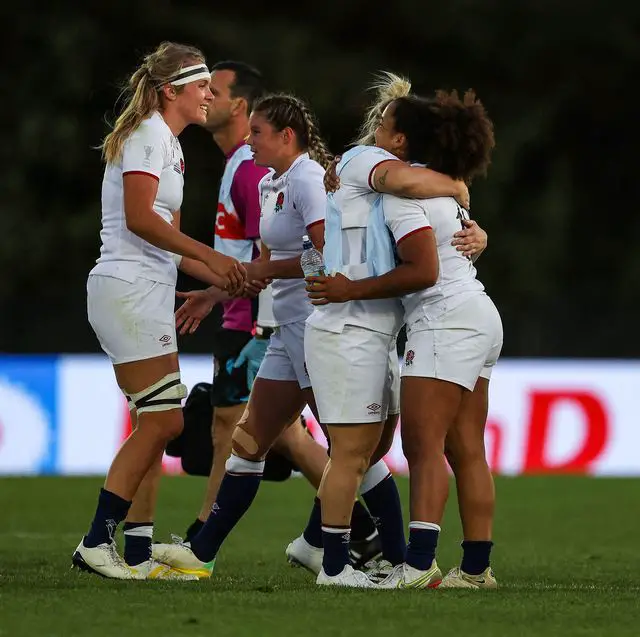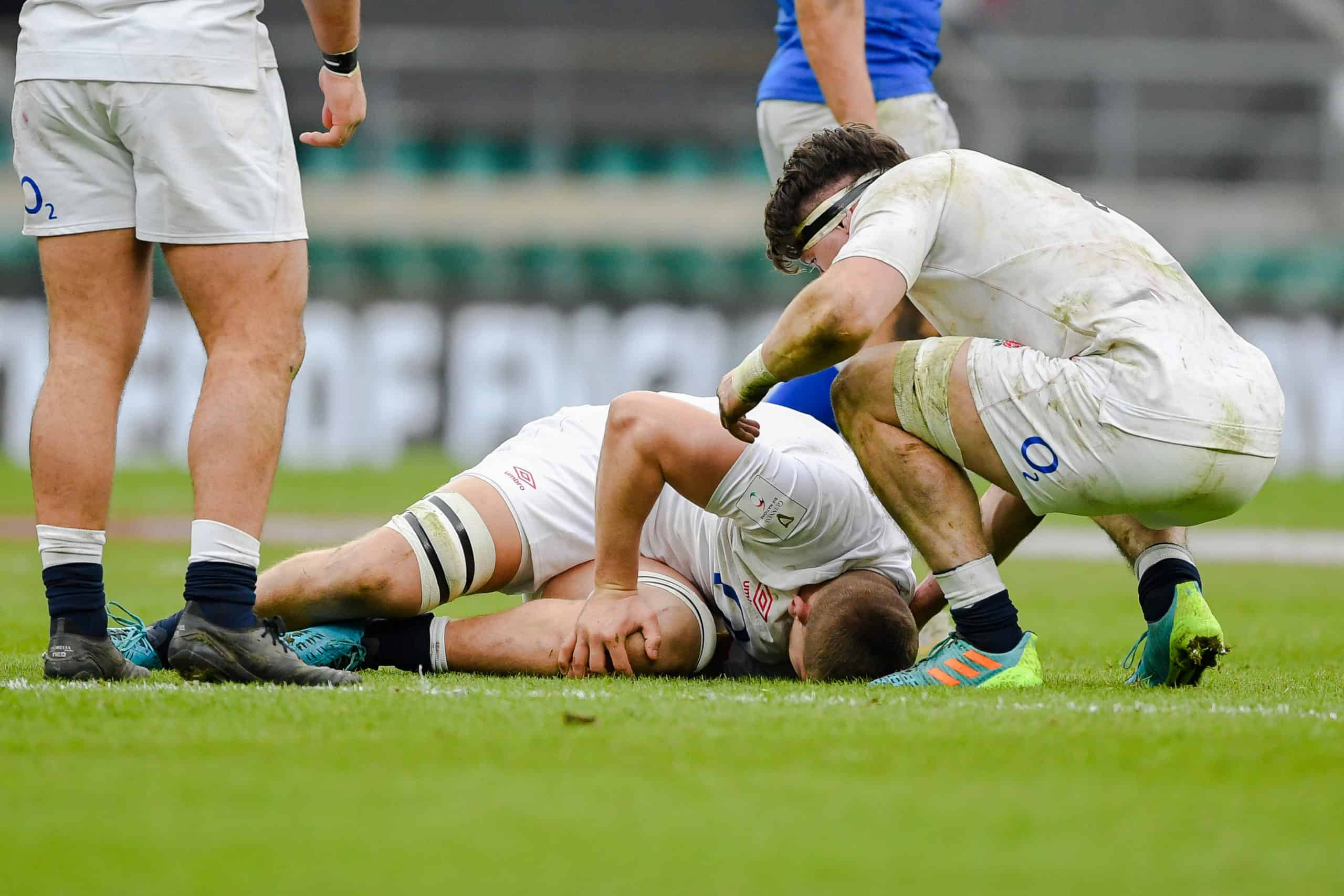Rugby is a physically demanding sport that requires players to be strong, agile, and resilient. It is a contact sport where players tackle and hit each other, leading many to wonder if rugby players wear helmets for protection.

Unlike American football, rugby players do not wear helmets during the game. This is because rugby has different rules and regulations when it comes to player safety. Rugby players rely on other forms of protective equipment such as mouthguards and padding.
According to a study conducted by the British Journal of Sports Medicine, rugby players are at a lower risk of head injury compared to football players. The study found that there were only 3.3 head injuries per 1,000 player hours in rugby, compared to 4.4 head injuries per 1,000 player hours in football. This can be attributed to the different types of contact that occur in the two sports. In rugby, players make tackles with their arms and shoulders, whereas in football, players often use their helmets to make tackles.
Another reason why rugby players do not wear helmets is that it would change the nature of the game. Rugby is a sport that is built on toughness and physicality. Adding helmets would reduce the level of physical contact and make the game less exciting for fans.
Mouthguards are an essential piece of protective equipment for rugby players. They protect the teeth and jaws from impact and help to prevent concussions. According to a study by the American Dental Association, rugby players are 60 times more likely to suffer dental injuries if they do not wear a mouthguard.
In addition to mouthguards, rugby players may also wear padding in areas such as the shoulders, thighs, and hips. This padding can help to absorb impact and prevent injuries. However, unlike American football, rugby players are not allowed to wear hard-shell pads or armor-like protection.
It is worth noting that rugby has been shown to have a lower incidence of head injuries compared to other contact sports such as football. This is in part due to the emphasis placed on proper tackling technique and positioning. Rugby players are taught to tackle with their arms and shoulders, and to avoid using their heads.
Player safety is a top priority in rugby, and as the sport continues to grow in popularity, it is important to ensure that safety remains a key focus. While rugby players do not wear helmets, they have other forms of protective equipment that are just as important in preventing injuries.

While helmets are not mandatory in rugby, some players may choose to wear soft-shell helmets for extra protection. These helmets are made from a soft, flexible material and are designed to absorb impact. However, they are not widely used in the sport, and there are no regulations around their use.
Another factor that contributes to the lower incidence of head injuries in rugby is the rules around tackling. In rugby, players must tackle their opponents using only their arms and shoulders. This technique, known as a “wrap tackle,” helps to prevent head-on collisions and reduces the risk of head injuries.
In recent years, rugby has made strides in improving player safety through the introduction of new laws and regulations. For example, in 2016, World Rugby implemented new rules around high tackles. These rules state that any tackle that makes contact with the head or neck of an opponent is considered dangerous play and can result in a penalty or a yellow or red card.
Furthermore, World Rugby has also introduced a “HIA” protocol, which stands for “Head Injury Assessment.” This protocol is used when a player shows signs of a head injury, and involves removing the player from the game and conducting a series of tests to determine if they are fit to return to play.
In terms of gender differences, female rugby players may face unique challenges when it comes to player safety. Studies have shown that female rugby players are more likely to suffer concussions than their male counterparts. This is thought to be due to differences in neck strength and tackling technique.
To address this issue, World Rugby has introduced a new “law application guideline” for the women’s game. This guideline emphasizes the importance of proper tackling technique and aims to reduce the risk of head injuries.
Conclusion
While rugby players do not wear helmets, they have other forms of protective equipment that are just as important in preventing injuries. The lower incidence of head injuries in rugby compared to other contact sports can be attributed to a variety of factors, including proper tackling technique, regulations around dangerous play, and improved player safety protocols. As the sport continues to evolve, it is important to prioritize player safety and continue to implement measures that reduce the risk of injuries.
FAQ
Are rugby helmets mandatory? No, rugby helmets are not mandatory. The use of helmets is not widely practiced in rugby, and there are no regulations requiring players to wear them.
What are the types of rugby helmets available? Soft-shell helmets are the most commonly used helmets in rugby. They are made of a soft, flexible material and are designed to absorb impact. They offer some protection against head injuries, but they are not considered as effective as helmets used in other contact sports.
Do rugby helmets prevent concussions? While rugby helmets can reduce the severity of head injuries, they cannot prevent concussions entirely. Concussions can occur due to the sudden movement of the brain inside the skull, which helmets cannot fully protect against.
Why don’t rugby players wear helmets? Rugby players don’t wear helmets primarily because they are not required to. Additionally, the use of helmets can give players a false sense of security and encourage them to engage in more dangerous tackles, increasing the risk of injury.
What other protective equipment do rugby players use? Rugby players use a mouthguard, which is designed to protect their teeth and gums. They also wear shoulder pads, which provide some protection against shoulder injuries.
Are rugby players at a higher risk of head injuries compared to other contact sports? While rugby is a contact sport, studies have shown that it has a lower incidence of head injuries compared to sports like American football and ice hockey. This is thought to be due to the rules around tackling in rugby, which emphasizes the use of the arms and shoulders and reduces the risk of head-on collisions.
Can helmets change the way rugby is played? The introduction of helmets in rugby can potentially change the way the sport is played. It may encourage players to engage in more dangerous tackles, leading to an increase in head injuries. Additionally, it can create a false sense of security and undermine the emphasis on proper tackling technique.
What measures are in place to prevent head injuries in rugby? Rugby has implemented new rules around high tackles, which prohibit tackles that make contact with the head or neck of an opponent. Additionally, World Rugby has introduced a “HIA” protocol, which is used when a player shows signs of a head injury. Furthermore, proper tackling technique is emphasized to reduce the risk of head injuries.
